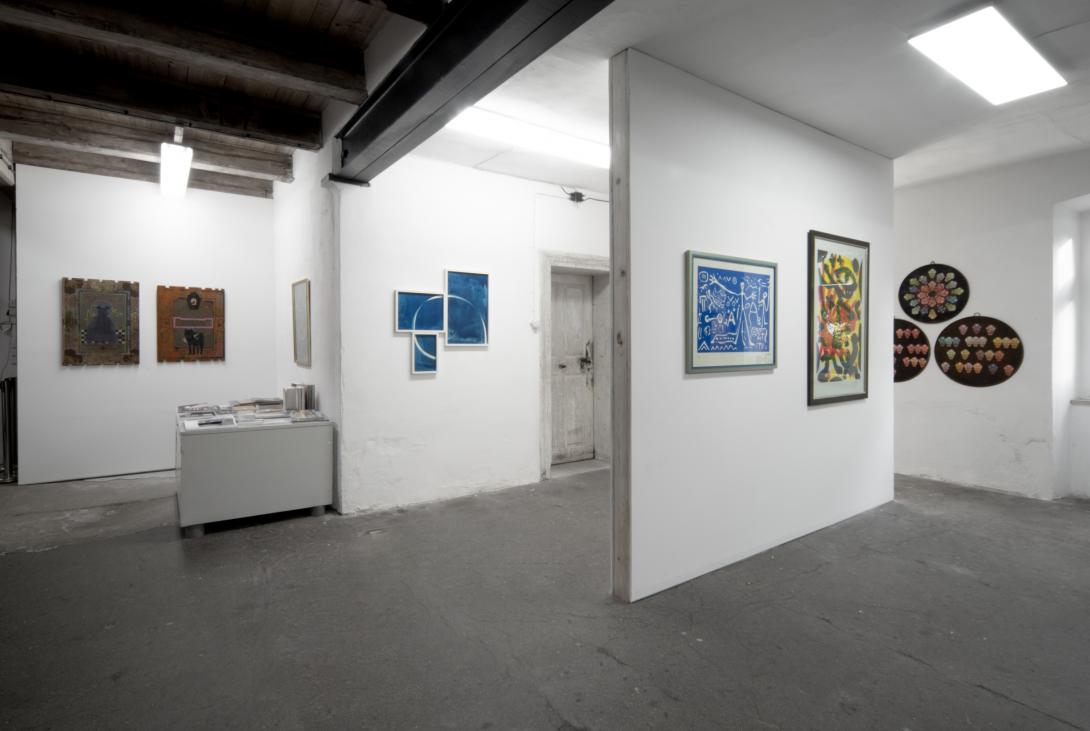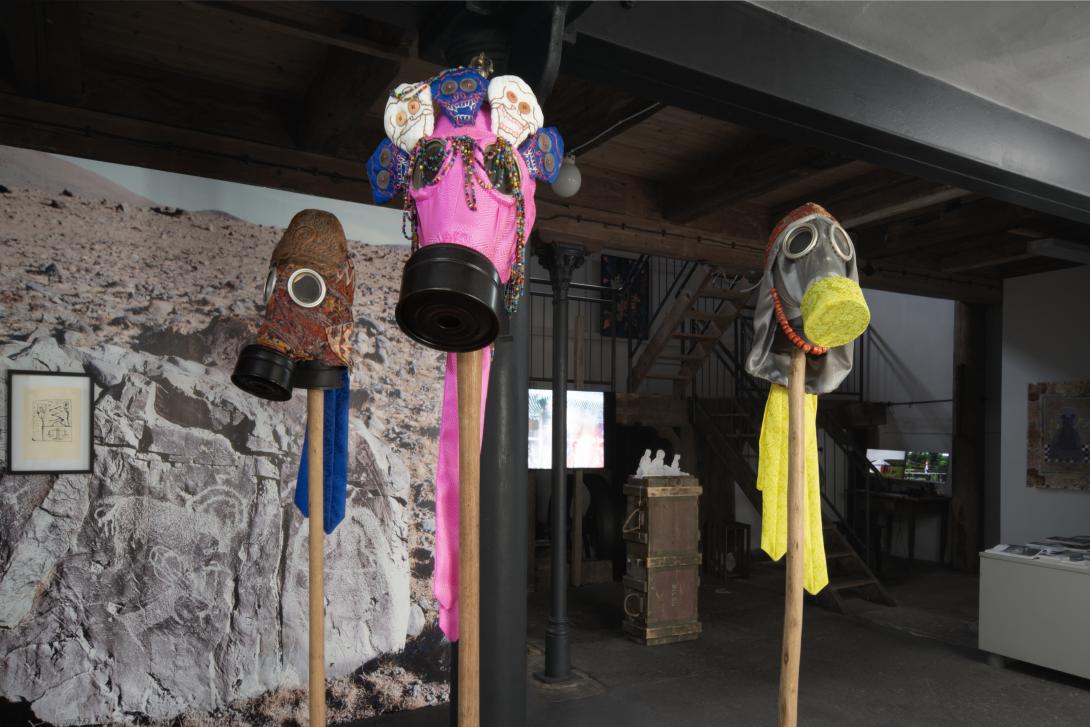The ZEIGENeV association is a guest at THEgallery.
We are making our rooms available for the project:
MONGOLIA
THE POST-NOMADIC EXPERIENCE
Nature - Art - Sustainability - Gender Relations - Metaphysics
The exhibition uses selected works of art to convey key aspects of Mongolia's nomadic culture's understanding of nature. The focus is on "The Great Blue Sky" - an identity-forming element of Mongolian culture to this day, which refers to the principle of a shapeless sky god in Tengrism. This principle can be seen in Bronze Age rock paintings in the Altai Mountains, which present the forces of nature in shamanic symbols. The exhibition contrasts this with the cosmologies of A. R. Penck, who translates a post-communist, fraying world into sign systems. Instead of contextualizing the material aesthetics of Joseph Beuys with Mongolian shamanism as before, the exhibition focuses on the forces of nature in Mongolia's visual memory, which come into conflict with the effects of modernity. Further influences on contemporary Mongolian art are fed by Lamaism, which is still visually powerful today. A special exhibition at the Biennale di Venezia is currently dedicated to the art movement "Mongol Zurag", in which Baatarzorig Batjargal and Gerelkhuu Ganbold are participating. Both artists use the demons of Mongol Zurag, as they can also be seen on lamaistic thangkhas, to formulate their criticism of the current social and ecological catastrophes in Mongolia. Dashdemed Sampil, who lives in Nuremberg, also draws energy from this tradition. Franz Ackermann's artistic practice has always been nomadic. His mental maps are created as visual records and testimonies to an accelerated world that does not even stop at Mongolia. The colorfully decorated "gas masks" by Nomin Bold speak of the unbearable air conditions in Ulaanbaatar, the worst in the whole world.
More information at: www.zeigen.online
Supported by the Bayrische Staatskanzlei and the Oberfrankenstiftung.
The ZEIGENeV association is a guest at THEgallery.
We are making our rooms available for the project:
MONGOLIA
THE POST-NOMADIC EXPERIENCE
Nature - Art - Sustainability - Gender Relations - Metaphysics
The exhibition uses selected works of art to convey key aspects of Mongolia's nomadic culture's understanding of nature. The focus is on "The Great Blue Sky" - an identity-forming element of Mongolian culture to this day, which refers to the principle of a shapeless sky god in Tengrism. This principle can be seen in Bronze Age rock paintings in the Altai Mountains, which present the forces of nature in shamanic symbols. The exhibition contrasts this with the cosmologies of A. R. Penck, who translates a post-communist, fraying world into sign systems. Instead of contextualizing the material aesthetics of Joseph Beuys with Mongolian shamanism as before, the exhibition focuses on the forces of nature in Mongolia's visual memory, which come into conflict with the effects of modernity. Further influences on contemporary Mongolian art are fed by Lamaism, which is still visually powerful today. A special exhibition at the Biennale di Venezia is currently dedicated to the art movement "Mongol Zurag", in which Baatarzorig Batjargal and Gerelkhuu Ganbold are participating. Both artists use the demons of Mongol Zurag, as they can also be seen on lamaistic thangkhas, to formulate their criticism of the current social and ecological catastrophes in Mongolia. Dashdemed Sampil, who lives in Nuremberg, also draws energy from this tradition. Franz Ackermann's artistic practice has always been nomadic. His mental maps are created as visual records and testimonies to an accelerated world that does not even stop at Mongolia. The colorfully decorated "gas masks" by Nomin Bold speak of the unbearable air conditions in Ulaanbaatar, the worst in the whole world.
More information at: www.zeigen.online
Supported by the Bayrische Staatskanzlei and the Oberfrankenstiftung.


